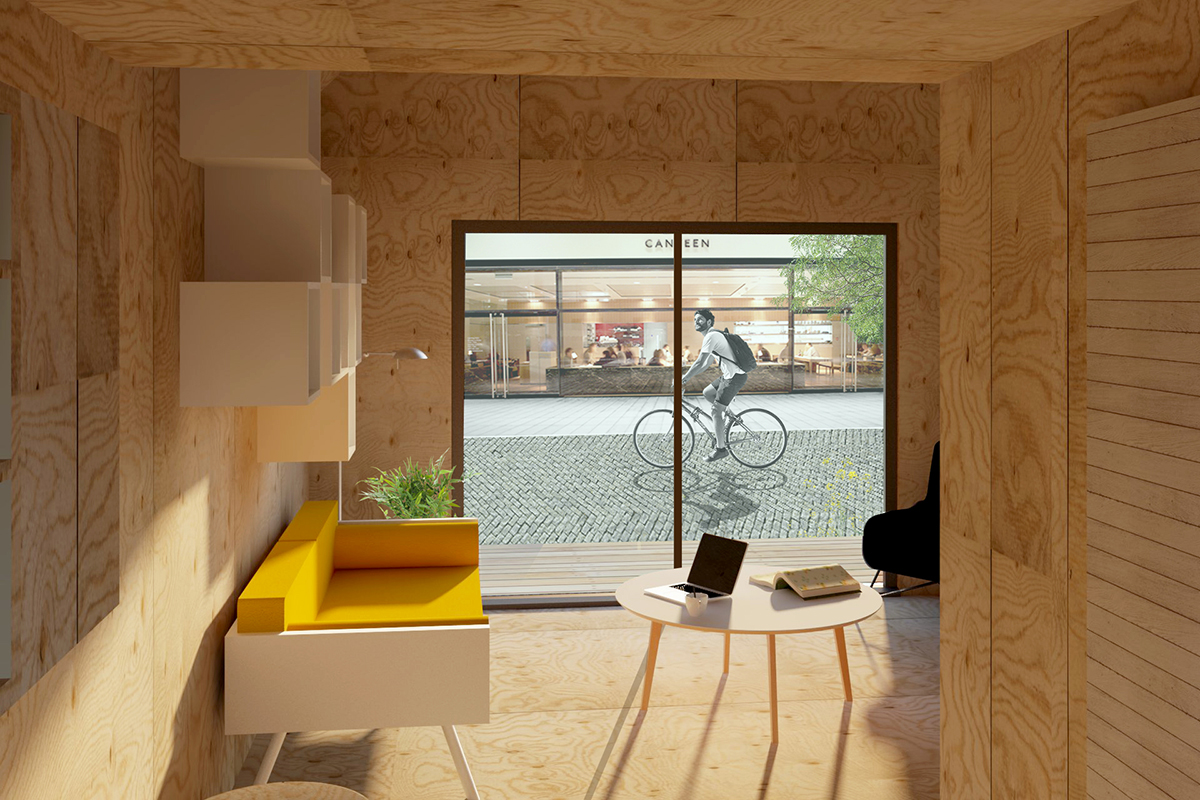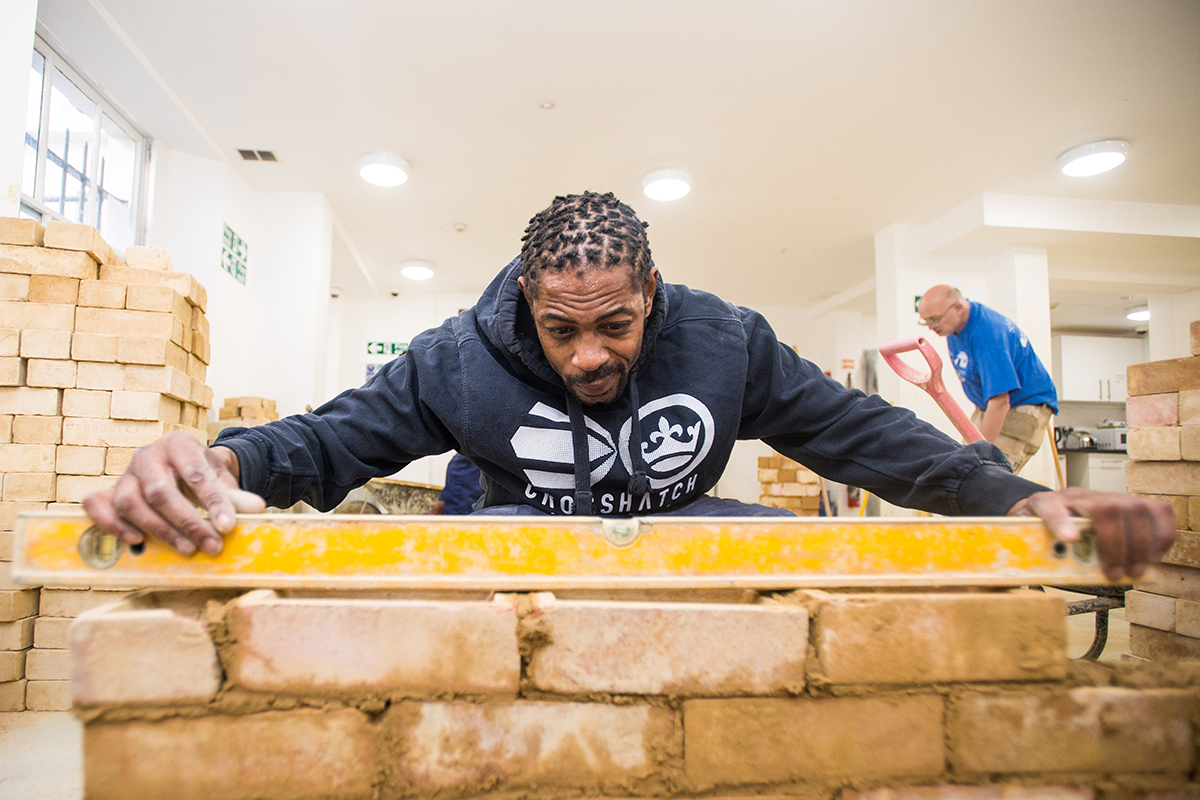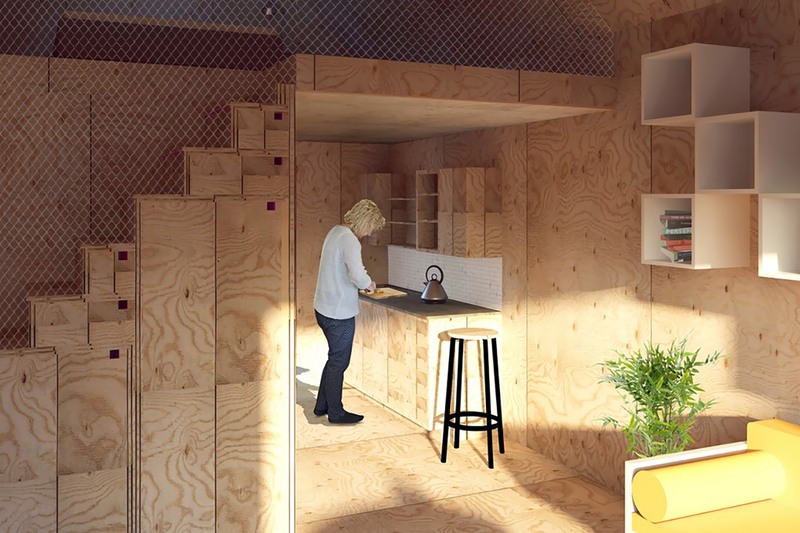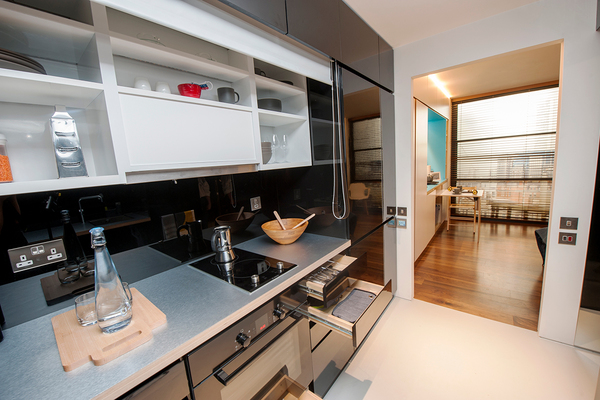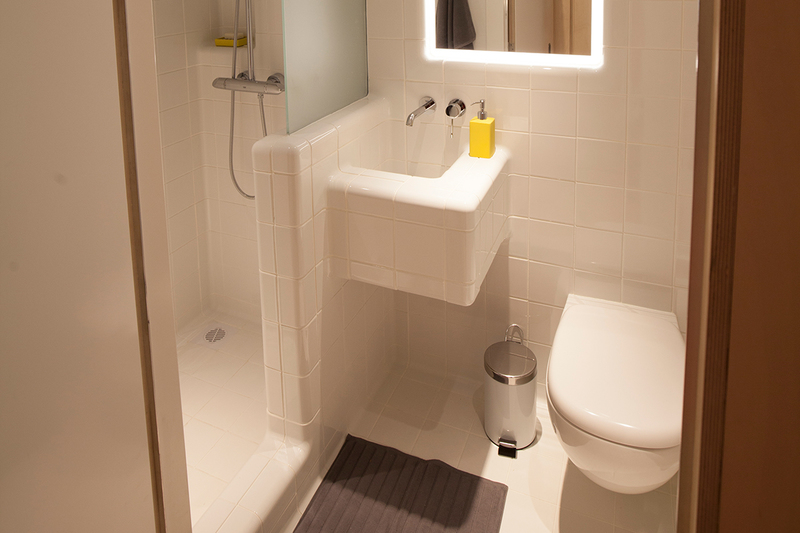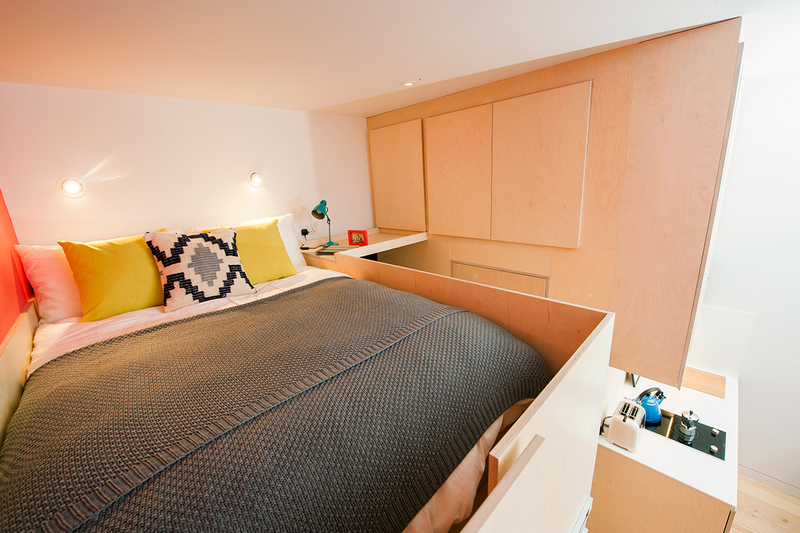You are viewing 1 of your 1 free articles
A big plan for small homes
Can a micro-housing project give Belfast’s young and single people a step up in life? David Capener reports
Belfast’s sea of red-brick chimneys stands as testament to the city’s industrial past. They rise above the long rows of compact terraced housing, built for the dockers and millworkers of previous centuries.
Today, these Belfast terraces – the affordable housing of their day – are the inspiration for a new type of compact living, designed for those without the means to access much of the city’s housing market.
The Holding Project (THP), a ‘micro-housing’ initiative (see box) with a prototype scheme set to be completed next year, aims to address what has become an urgent need for cheaper housing for single people in Northern Ireland’s capital.
According to Belfast City Council, the city is one of the youngest in Europe, with under-21s accounting for a third of the population.
The Belfast Housing Investment Plan 2015 found that 7% of the housing stock in Northern Ireland comprises one-bedroom properties, meaning rental demand is high. The result is often unaffordable rents.
A recent report from the Chartered Institute of Housing (CIH) revealed that 22% of those seeking rental accommodation are unemployed or earning less than £15,000 per year. Many are left with limited options: living with parents, shared accommodation or joining the queue of 37,586 on the housing waiting list.
“There’s a maximum amount of time we would set for residents to stay.”
THP, founded by Dearbhaile Heaney, Sean Cullen and Chris Miller after they met at an innovation forum, aims to address this need. The 2018 prototype will involve building three 34 square metre units – in excess of the Parker Morris space standards, which were established in the early 1960s.
A generous ground floor living space will open into a compact but cleverly designed kitchen area. A mezzanine bedroom will be housed in the eaves, with storage space neatly incorporated into the stairs. THP is yet to find a site for the prototype but could use a community asset transfer, which is the transfer of public land or buildings from its owner to a community organisation.
Each of the three ‘micro-homes’ is expected to cost £30,000 to build. THP hopes to follow this with a 20-unit scheme at a site yet to be agreed in Belfast. Northern Ireland’s Department for Communities (DfC) and Housing Executive are both supportive of the initiative. An application for funding has been submitted to the DfC.
Besides the compactness of the homes, what makes THP different from other low-cost providers are the tenancies themselves. Residents won’t live in THP homes long term but will instead be limited to three years. “There’s a maximum amount of time we would set for residents to stay,” says Mr Cullen, who trained as an architect and is studying for a PhD in climactically responsive building facades. “The idea isn’t that this is the space people should live in for the rest of their lives.”
Instead, he continues, the primary aim of THP is to become “a stepping stone to social mobility”.
He adds: “This is why we chose the word ‘holding’ as it represents the idea of uplifting and supporting someone; we saw it as a word of nurturing and protecting.”
Savings requirements
The scheme is open to anyone on housing benefit or low incomes. Rent will start at £250 per month for those on housing benefit, with low-income tenants paying no more than £400. THP will be classified as a private rental scheme.
To become tenants, those already on the housing list would need to leave the list, losing their accumulated points. With many young singles waiting years to be housed, THP hopes that this will not become an issue.
As well as providing housing, THP also works as a savings scheme. In other micro-housing projects it is hoped that cheaper rents will encourage tenants to save; with THP saving is a requirement. Before joining, tenants set an amount of up to 20% to be deducted from their monthly rent. During the course of their tenancy, the agreed figure will be added to a collective saving fund and will earn interest, although Mr Cullen admits that they are still working out the details of the scheme. After three years a tenant can save up to £3,000.
“It’s a kind of psychological concept,” Mr Cullen explains, likening it to saving initiatives like the Moneybox app, which rounds the price of regular purchases selected by the user up to the nearest pound. This money is then invested in shares or saving schemes.
Based on figures from the Northern Ireland House Price Index, the average price of a typical Belfast terraced house is £111,468. The average wage in Belfast is £21,836. Assuming a deposit of £10,000 (an amount unaffordable to many), a salary multiple of 4.5 would be required to secure an adequate mortgage.
While £3,000 won’t be enough for a mortgage deposit, Ms Heaney, who works as an enterprise executive for The Prince’s Trust, hopes that tenants might use savings to “further themselves in some way, whether it be in education, or starting a business”. She stresses that “the ethos of the scheme is to help young single people to become socially and economically mobile”; it isn’t to provide them with a long-term housing solution.
“The ethos of the scheme is to help young single people to become socially and economically mobile.”
The concept is to build “beautiful, well designed and affordable living options that aren’t fuelled by the pursuit of money,” says Mr Miller, a trainee architect. THP wants to relocate the issue of housing away from a “commodity market, to one that is more people focused, putting the universal right of people to be housed before profit making [and] placing inherent social, cultural and economic value before the opportunity for financial gain”.
Part of a community
Tenants will have to sign up to a co-operative-style agreement to participate in community life, taking responsibility for shared gardens, collective events and projects.
The micro-houses will also be religiously ‘mixed’, THP hopes. The political and religious geography of the city creates an added layer of complexity for any project, given that 90% of social housing is still segregated.
Nicola McCrudden, director of the CIH in Northern Ireland and the Republic, is supportive. “I am all for new and innovative ways to provide much-needed accommodation for young people in our city,” she says. “This project is certainly that — linking sustainable rented housing with a savings scheme.”
As in many cities across the UK, Belfast needs creative thinking about how to use its land. THP hopes to offer a chance for those caught in hard-to-break cycles of unemployment or low-waged jobs. It provides the possibility for a pause in the perpetual struggle against the turbulent currents of social mobility — a slow, three-year deep breath, and, hopefully, a new opportunity.
Picture: U+I
What is micro-housing?
For those unable to afford the often astronomical rents required to live in major cities, micro-housing can be a cheaper – and smaller – alternative.
Richmond Housing Partnership hopes to offer 26 square metre, one-bedroom ‘houses’ in London.
Picture: U+I
Meanwhile, U+I is developing an even smaller 19 square metre apartment, also in central London (above and below).
As a short-term solution, micro-housing can help to overcome affordability issues.
But in the long term, with space standards often 50% smaller than recommended by Parker Morris, it raises issues about the value and importance of well designed, generous spaces and the positive impact they can have on our health and well-being.
Picture: U+I
A 2015 report from the Royal Institute of British Architects states that most new build housing is not big enough for families “to live comfortably… to eat and socialise together, to accommodate a growing family or ageing relatives, or even to store possessions”.
It might offer a solution to homelessness or emergency housing, but how sustainable it is to live in such small homes is hotly debated.
On the waiting list
Demand for social housing is high with the latest Northern Ireland Housing Statistics showing that 22,645 people in Belfast are considered to be in housing stress and 12,202 presenting as homeless – the majority of whom are single men or women. The allocation system is designed to house those with the greatest need. For the young and single the wait can be lengthy.
Three months ago, 21-year-old Niall Ferguson from Belfast joined the housing waiting list. He is not very hopeful. “When I registered they told me it would be hard to get housed; I think I will be on the list for years,” he says.
Currently unemployed and living in a small four-bedroom house with eight other family members, it is unlikely that Mr Ferguson will accrue sufficient points to be housed. I asked him what he thought about needing to leave the waiting list to be part of a scheme, such as The Holding Project (THP). “It’s difficult for someone like me to build up points, I think the only way I’ll get housed is through renting privately or using a scheme like this.”
He is in exactly the sort of circumstances of someone who may benefit from THP.
